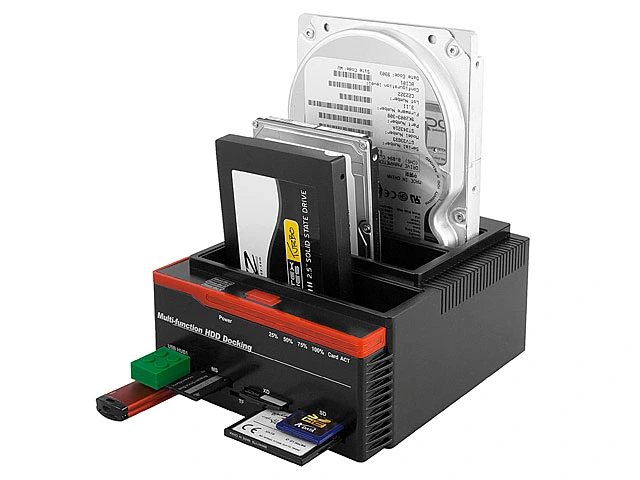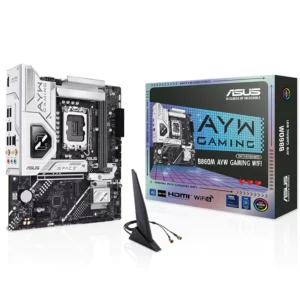Water Cooling vs Air Cooling

In the past decades, a simple passive heatsink was regarded sufficient to cool CPUs that only used a few watts of power. How much time has changed! Nowadays, this is not uncommon to have processors that pull 250W or more at their default setting. Necessarily, the more power a CPU uses, the more thermal energy is generated, so it tends to run hot. The hot CPU requires better cooling not only to stay within an acceptable and secure operating range but also to keep its performance at its best.
Quality cooling is not only about delivering a low temperature in and of itself. All contemporary CPUs from Intel and AMD feature frequency boosting technology. If a chip is cool enough and has sufficient power budget, the CPU clocks itself high and provide better performance. The frequency boosts or turbo boosts could be extremely large. If your cooling could handle this, several CPUs could be boosted by well over 1 GHz above their base clocks. This doesn’t mean you need top-shelf cooling in every condition. A lot of affordable CPUs tend to be a lot more power thrifty; in these cases, a good quality air cooler easily lets your CPU fly while keeping it cool & running silently.
The last thing anyone desires is a cooler that sounds like a jet engine. Germans are known for their engineering ability. They have built their reputation as the manufacturers of cooling products and cases that highlight quiet and efficient cooling. These manufacturers produce both air and water coolers, so whichever path you select, you’re covered. But what sort of cooling should you focus on for your next build? Let’s take a look at water cooling versus air cooling that starts with a few basics and pros and cons of each cooler.
Also Read: Best Coolers for Intel 11 Gen CPUs
Differences between air cooling and water cooling:

Water has a high thermal conductivity that gives this a better cooling capability than air. But remember that a liquid cooler still employs air to cool through the radiator, so when this comes to PC cooling, this doesn’t seem that water cooling is extremely superior to air cooling; although, both of these systems have their respective advantages and disadvantages.
Air coolers are simple, and these appliances have no moving parts apart from easy to replace fans. These machines have fundamentally unlimited reliability. These coolers tend to be more affordable, and these are well-suited to budget-oriented builds or builds that are not equipped with high TDP (Thermal Design Power) processors. Besides, large heat pipe coolers, specifically those made with more conductive (and costly) materials like copper means that many high-end air coolers are approximately as effective as decent AIO (all-in-one) air coolers. Their weakness is these appliances could be noisy under load and reach peak temperature quickly, especially the compact cheap ones. Under the periods of high load, the fan’s temperature could ramp quickly. And, low noise fans are remarkably good at avoiding annoying ramp-ups. A fan ramp could also be lessened by changing ‘the spin-up’ delay in your fan control software or BIOS (Basic Input/Output System).
A water cooler’s main benefit is its superior heat absorption and dissipation ability. This makes it well-suited to cooling high TDP (Thermal Design Power) multi-core processors. These appliances tend to be quiet under load, have a more compact socket area footprint and depending on the installation could also expel nearly all heat outside the CPU system as compared to an air cooler that exhausts in the inner sides of your CPU.
The water coolers aren’t perfect; such coolers contain pumps having moving parts, and don’t forget that water is electrically conductive; this aspect could damage your CPU system if the coolers leak. These products might also worsen over time, particularly if particles begin to gather in the block channels + evaporation of the coolant could also happen over time. This is improbable with modern quality control and engineering practices, but accidents and failures could happen; although, these are rare.
Air or water: which cooler is suitable for you?

Probably, the biggest factor is pricing. Other considerable factors involve the space in your situation, and whether you want to overclock your CPU or not. There are many other considerable factors too. The layout of your motherboard, RAM slots, and your intended practice all impacts your choice. Well, the air and water coolers are sophisticated & well-designed, but eventually, the choice is yours.
Also Read: Best Monitor in 2022 For You
Conclusion:
Hopefully, you might have understood all notable points regarding water cooling versus air cooling. We, Fast IT Solutions, sell standard CPU coolers and have been operating for a long duration. Hmm, if you want to examine the price/cost and other attributes of coolers on a credible online store, do visit Fast IT Solutions site. Well, there are high chances that you might acquire the product of your needs. Besides, if you have any queries, do let us know through your comments or the contact form of our website. We’ll respond you asap. That’s all for today. Keep on visiting our site for more effective blog pieces.
-
Product on sale
 Asus Prime Z890-P WIFI-CSM LGA 1851 ATX Motherboard (PRIME Z890-P WIFI-CSM)Original price was: $489.00.$472.00Current price is: $472.00. ‘inc. GST’
Asus Prime Z890-P WIFI-CSM LGA 1851 ATX Motherboard (PRIME Z890-P WIFI-CSM)Original price was: $489.00.$472.00Current price is: $472.00. ‘inc. GST’ -
 MSI MPG B850 Edge TI WiFi AM5 ATX Motherboard (B850 EDGE TI WIFI)$457.00 ‘inc. GST’
MSI MPG B850 Edge TI WiFi AM5 ATX Motherboard (B850 EDGE TI WIFI)$457.00 ‘inc. GST’ -
 MSI B850 GAMING PLUS WIFI AM5 ATX Motherboard (B850 GAMING PLUS WIFI)$374.00 ‘inc. GST’
MSI B850 GAMING PLUS WIFI AM5 ATX Motherboard (B850 GAMING PLUS WIFI)$374.00 ‘inc. GST’ -
Product on sale
 Gigabyte A620I AX AM5 mini-ITX Motherboard (A620I AX)Original price was: $299.00.$273.00Current price is: $273.00. ‘inc. GST’
Gigabyte A620I AX AM5 mini-ITX Motherboard (A620I AX)Original price was: $299.00.$273.00Current price is: $273.00. ‘inc. GST’ -
Product on sale
 Asus ROG Maximus Z890 Apex LGA 1851 ATX Motherboard (ROG MAXIMUS Z890 APEX)Original price was: $1,079.00.$1,023.00Current price is: $1,023.00. ‘inc. GST’
Asus ROG Maximus Z890 Apex LGA 1851 ATX Motherboard (ROG MAXIMUS Z890 APEX)Original price was: $1,079.00.$1,023.00Current price is: $1,023.00. ‘inc. GST’ -
Product on sale
 MSI PRO Z890-S WIFI Z890 LGA1851 ATX Motherboard-PRO Z890-S WIFIOriginal price was: $640.00.$509.00Current price is: $509.00. ‘inc. GST’
MSI PRO Z890-S WIFI Z890 LGA1851 ATX Motherboard-PRO Z890-S WIFIOriginal price was: $640.00.$509.00Current price is: $509.00. ‘inc. GST’ -
 Gigabyte B860 Aorus Elite WiFi7 Ice LGA 1851 ATX Motherboard (B860 A ELITE WF7 ICE)$428.00 ‘inc. GST’
Gigabyte B860 Aorus Elite WiFi7 Ice LGA 1851 ATX Motherboard (B860 A ELITE WF7 ICE)$428.00 ‘inc. GST’ -
 Asus B860M AYW Gaming WiFi LGA 1851 mATX Motherboard (B860M AYW GAMING WIFI)Request For Price
Asus B860M AYW Gaming WiFi LGA 1851 mATX Motherboard (B860M AYW GAMING WIFI)Request For Price -
 MSI PRO H610M-S WIFI DDR4 LGA 1700 mATX Motherboard (PRO H610M-S WIFI DDR4)$184.00 ‘inc. GST’
MSI PRO H610M-S WIFI DDR4 LGA 1700 mATX Motherboard (PRO H610M-S WIFI DDR4)$184.00 ‘inc. GST’

























































